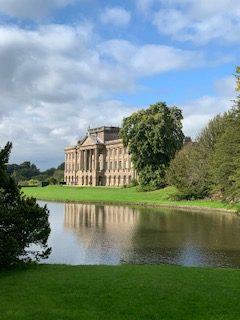LYME PARK CHESHIRE

Lyme Park Cheshire is a glorious English National Trust property, a short 8 – mile drive from our guesthouse in Buxton and takes only 30 minutes from door to door. It has been owned by the Leigh family for just under 600 years until Richard Legh, 3rd Baron Newton, gave Lyme Park to the National Trust in 1946.
With no less than six centuries of history just waiting to be explored, it is simply a matter of deciding where to explore first; visit the interior of the house itself with no less than 5 magnificent rooms to acquaint yourselves with.
Or perhaps survey their stunning antique clock collection that includes Britain’s oldest surviving pendulum clock.
Visitors may also wish to learn of the Sarum Missal at Lyme, ‘deemed the most important book in the National Trust.’ Printed by William Caxton in 1487. He was the first to establish a printing press at Westminster. He travelled to Paris to establish the technique required to reproduce the two colours of red and black for the text. Caxton is known for having printed such texts as Chaucer’s ‘Canterbury Tales’. The Sarum Missal has been owned by the Legh family from 1503 until its sale to the National Trust in 2008. The Missal ‘served as an instruction manual detailing how to deliver the services and festivals of religious life’ [National Trust].
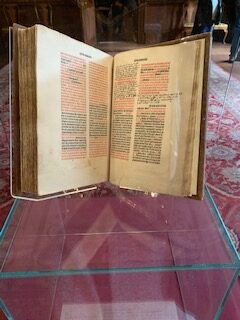
And then of course there are the gardens and orangery to visit too.
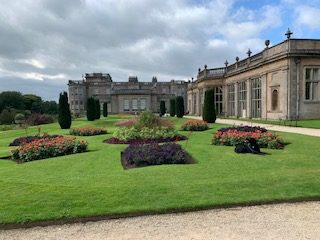
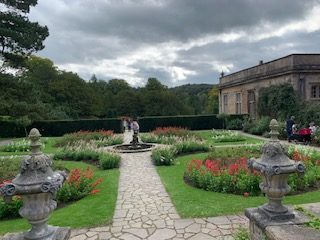
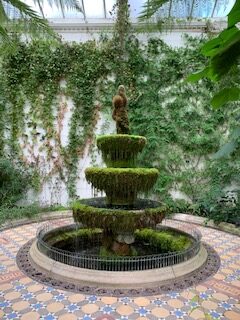
Explore the rooms at Lyme Park Cheshire
The Drawing Room
On a sunny day, the window in the drawing room is magnificent. It is ‘the best preserved of the older Elizabethan House’ according to the National Trust. With its deep oak panelling and medieval stained-glass windows, it’s a wonderful room to admire.
There are some spectacular examples of furniture adorning the room. The George I gilt wood mirrors are early 18th Century and the Grecian harp, completed in 1829, has a rosewood veneered body and gilt lined detailing with a fluted column, as seen in the picture below.
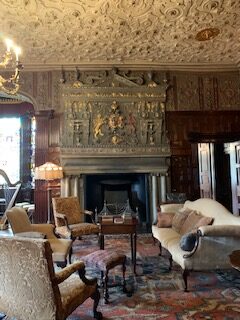
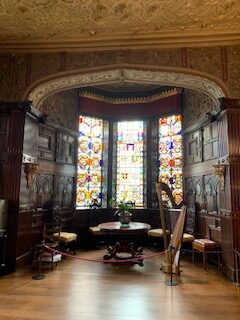
The stag Parlour at Lyme Park Cheshire
Whilst a smaller room, its significance to history certainly isn’t. It houses four 19th century chairs that bear the monogram CR of Charles 1st. The National Trust at Lyme describes the fabric for the upholstered chairs as having ‘been taken from the cloak worn by Charles 1 on the scaffold’. Its name derives from the four friezes around the top of the room depicting the life cycle of the deer. With James II removed from the throne in 1688, Peter Leigh and the Jacobite ‘Cheshire gentlemen’ met here to plot the return of the exiled Stuarts in the 1690s. It was in the Stag Parlour that their first meeting was held. They twice imprisoned Peter Legh XII in the Tower of London, suspected of involvement in the ‘Lancashire plot’ to restore King James II.
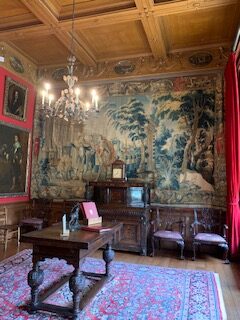
The Knight’s bedroom
It is said that Mary Queen of Scots slept here. During the restoration of this room, The National Trust regales a story that a skeleton was found lying in a cavity beneath the floorboards. It is now said to experience ghostly apparitions.
The Long Gallery
The Legh family used the gallery as a display of their great wealth. The 2nd Lady Newton later used it as a theatre where family performances were displayed, together with being used as a room to distribute Christmas presents to the children of their employees.
During the 2nd World War, it became a nursery for evacuee children.
The Library
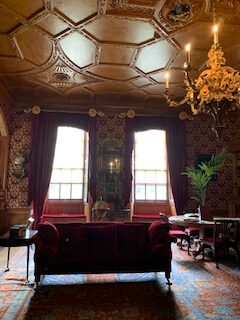
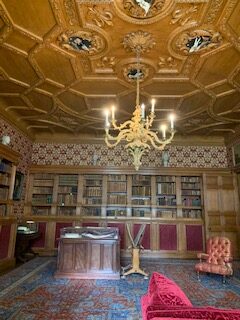
A firm favourite of visitors, the room was redecorated and adorned as it would have been in the Victorian era. During its restoration in 2008, they discovered fragments of the gold and crimson flock wallpaper behind the bookcases, which enabled the restoration to create an ‘accurate’ depiction of the room which visitors can admire at their leisure. This room is rope-free; Visitors are enticed to have a seat and enjoy the room in all its glory.
Colonel Thomas Legh, known as a rogue in the family, inherited Lyme Park Cheshire from his uncle in 1792. He never married but had fathered 7 children by the time he died, by 7 different women from the servant classes. Thomas Legh claimed his eldest son shortly after his birth and named him Thomas Peter. He was brought up on his father’s estate in Lancashire and inherited Lyme after his father’s death.
There is so much to explore at Lyme Park it really makes a marvellous day out.
On a warm summer’s day, it can also be great to have a picnic and a blanket (we can provide this for you at a small charge) and explore the formal gardens and ancient woodland at Lyme Park Cheshire at your leisure.
For more ideas of other days out and places to visit whilst in the Picturesque Peak District, visit our other blogs here.
For more information about Lyme Park visit their website directly here
©Copyright 2022 All Rights Reserved

